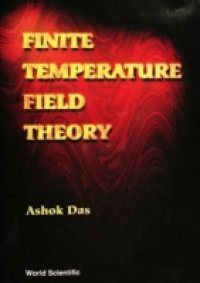This book discusses all three formalisms used in the study of finite temperature field theory, namely the imaginary time formalism, the closed time formalism and thermofield dynamics. Applications of the formalisms are worked out in detail. Gauge field theories and symmetry restoration at finite temperature are among the practical examples discussed in depth. The question of gauge dependence of the effective potential and the Nielsen identities are explained. The nonrestoration of some symmetries at high temperature (such as supersymmetry) and theories on nonsimply connected space-times are also described thoroughly. Other topics include (1+1)- and (2+1)-dimensional field theories at finite temperature and phase transitions, derivative expansion, linear response theory and the question of infrared divergences at finite temperature. In addition, examples of nonequilibrium phenomena are discussed with the disoriented chiral condensates as an illustration.This book is a very useful tool for graduate students, teachers and researchers in theoretical physics.Contents: Imaginary Time FormalismReal Time FormalismThermofield DynamicsGauge TheoriesCutting Rules at T ≠ 0Symmetry BreakingNielsen IdentitiesSubtleties at T ≠ 0Supersymmetry at T ≠ 0Derivative ExpansionNon-Equilibrium PhenomenaReadership: Graduate students, teachers and researchers in theoretical physics.Key Features:It covers experimental techniques — especially relevant for many-body quantum physics — in ultracold gases that have not previously been described in textbooks, either at all or at a similar level of depthThe topics are approached from both theoretical and experimental points of view, with twin chapters written by theorists and experimentalistsThe authors of the chapters are world-class experts, often pioneers, in the topic they are writing about

